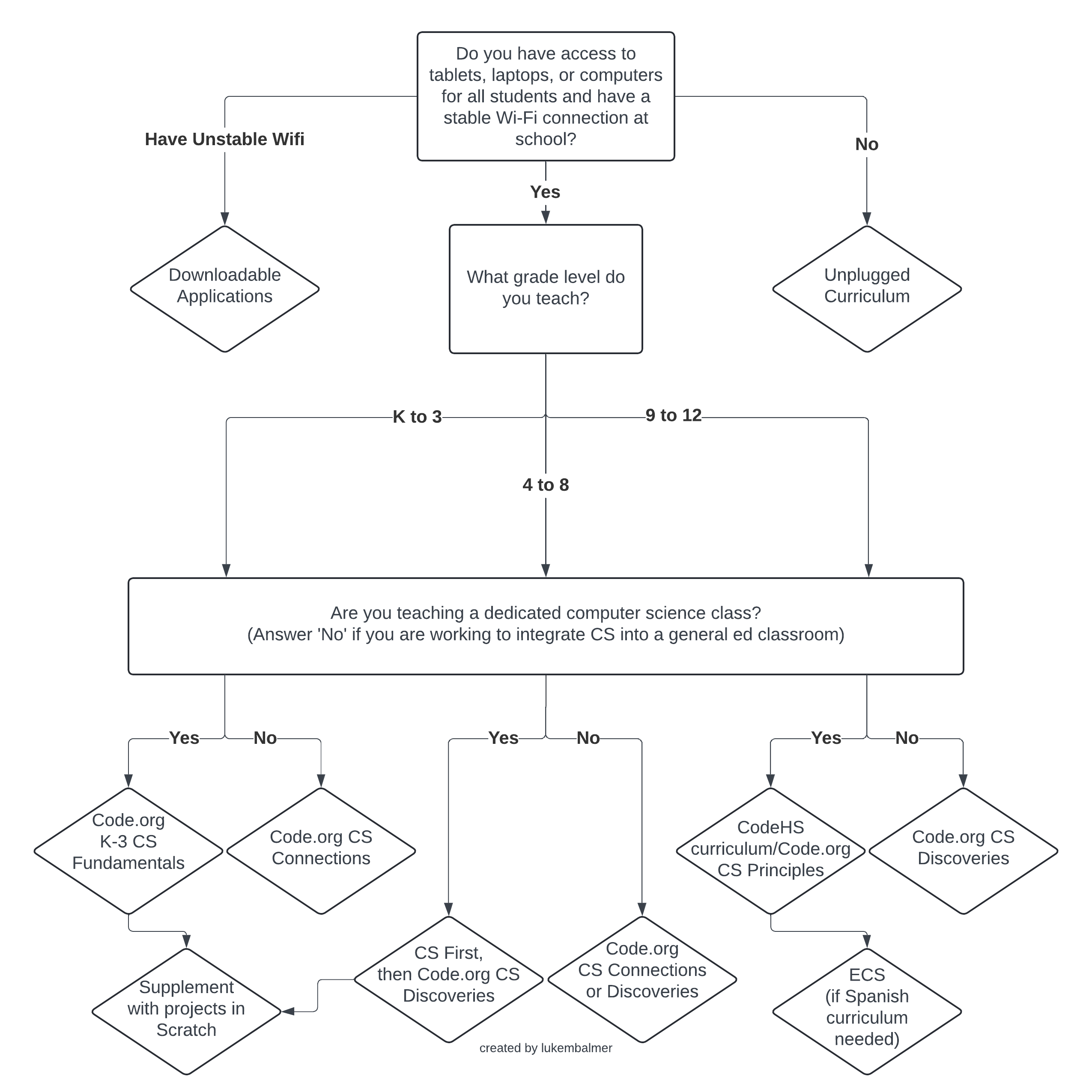How to start?
Many teachers have already begun implementing computer science in their curriculum, but resources on effective pedagogy and practices can be difficult to find or inaccessible. For those who have some experience or have already found a curriculum for them, PD and Courses as well as Further Reading point to resources for your exploration. For those who are just beginning or feel uneasy in the face of a daunting undertaking, the guide below offers a step-by-step guide.
First, pick a tentative curriculum to start with by using the flowchart below:
By picking a curriculum to begin with, teachers can navigate the first few weeks of instruction while building CS specific content knowledge, pedagogy, and classroom management.
Downloadable Applications
Scratch is the one of most popular programming applications and is a great place to start.
Unplugged Curriculum
CSUnplugged offers numerous resources and lesson plans to teach CS topics without technology. These are excellent to implement if you do not have access to laptops or tablets for students, or to use in support of other curriculums as they can often engage students in play and kinetic learning.
Code.org has moreunplugged lessons to utilize as well.
Code.org K-3 CS Fundamentals
CSF is a set of elementary courses excellent for beginning learners. Pick among courses per grade level or use self-paced courses.
Code.org CS Connections
CSC includes lessons that incorporate other core subjects and are great for general education 3-5 classrooms. Their comprehensive PD and beginner-friendly lessons can be used with K-2 students comfortable with technology use as well.
Code.org CS Discoveries
CSD is an incredibly flexible grades 6-10 course. Comprehensive, flexible, and modular.
CS First
CS First is a curriculum developed by Google and specialized to grades 4-8. Using Scratch, students learn through block-based programming.
CodeHS
CodeHS works with teachers to provide both high school curriculum and a useful LMS.
Code.org CS Principles
CSP is a year-long course aligned to(and certified for use with) AP CSP courses. Those teaching AP CSA can use the respective Code.org CSA curriculum as well.
Exploring Computer Science
ECS, along with providing extensive curriculum in Spanish, ECS is an extensive and culturally responsive curriculum made with underrepresented students in mind. For K-5 Spanish curriculum, see CSF. For 6-8 Spanish curriculum, see CSD.
After deciding on a tentative curriculum to use, explore filtered, curated lists of tools to use in the classroom, lessons, PD, and courses on CS teaching, and blogs, reports, and academic work on CS pedagogy.
